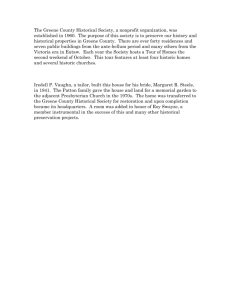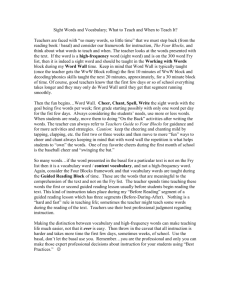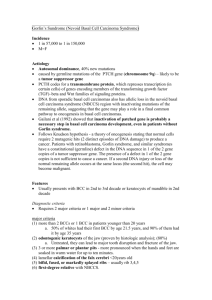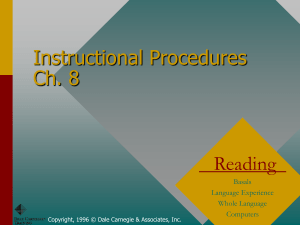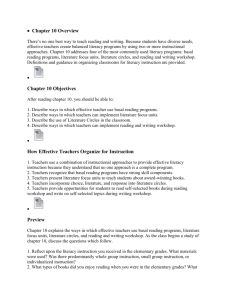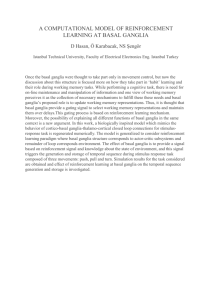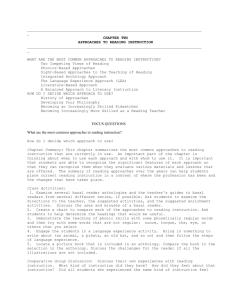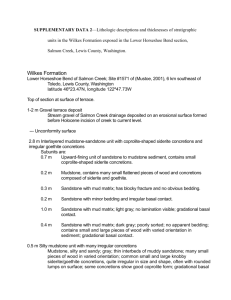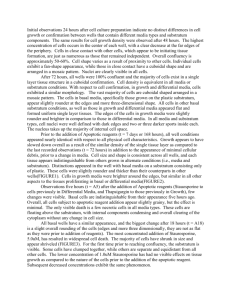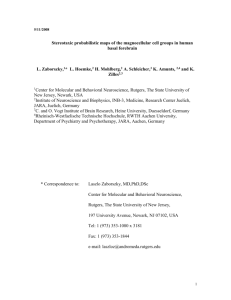WORD STUDY LESSON PLAN - Teaching As Leadership
advertisement
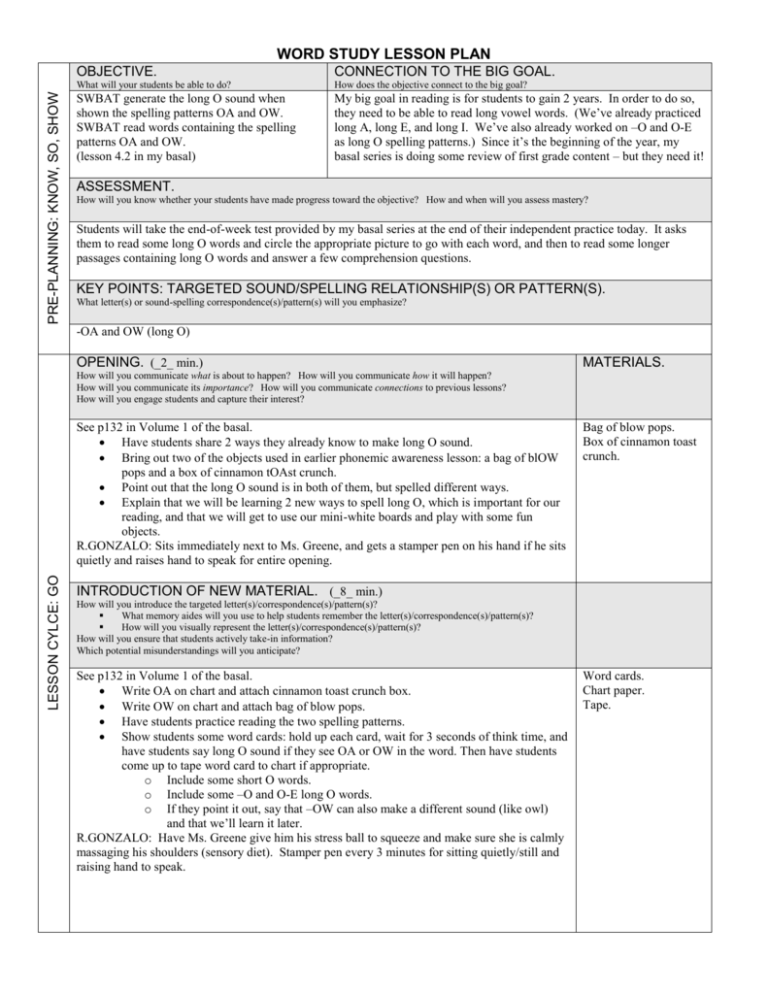
PRE-PLANNING: KNOW, SO, SHOW WORD STUDY LESSON PLAN OBJECTIVE. CONNECTION TO THE BIG GOAL. What will your students be able to do? How does the objective connect to the big goal? SWBAT generate the long O sound when shown the spelling patterns OA and OW. SWBAT read words containing the spelling patterns OA and OW. (lesson 4.2 in my basal) My big goal in reading is for students to gain 2 years. In order to do so, they need to be able to read long vowel words. (We’ve already practiced long A, long E, and long I. We’ve also already worked on –O and O-E as long O spelling patterns.) Since it’s the beginning of the year, my basal series is doing some review of first grade content – but they need it! ASSESSMENT. How will you know whether your students have made progress toward the objective? How and when will you assess mastery? Students will take the end-of-week test provided by my basal series at the end of their independent practice today. It asks them to read some long O words and circle the appropriate picture to go with each word, and then to read some longer passages containing long O words and answer a few comprehension questions. KEY POINTS: TARGETED SOUND/SPELLING RELATIONSHIP(S) OR PATTERN(S). What letter(s) or sound-spelling correspondence(s)/pattern(s) will you emphasize? -OA and OW (long O) OPENING. (_2_ min.) MATERIALS. How will you communicate what is about to happen? How will you communicate how it will happen? How will you communicate its importance? How will you communicate connections to previous lessons? How will you engage students and capture their interest? LESSON CYLCE: GO See p132 in Volume 1 of the basal. Have students share 2 ways they already know to make long O sound. Bring out two of the objects used in earlier phonemic awareness lesson: a bag of blOW pops and a box of cinnamon tOAst crunch. Point out that the long O sound is in both of them, but spelled different ways. Explain that we will be learning 2 new ways to spell long O, which is important for our reading, and that we will get to use our mini-white boards and play with some fun objects. R.GONZALO: Sits immediately next to Ms. Greene, and gets a stamper pen on his hand if he sits quietly and raises hand to speak for entire opening. Bag of blow pops. Box of cinnamon toast crunch. INTRODUCTION OF NEW MATERIAL. (_8_ min.) How will you introduce the targeted letter(s)/correspondence(s)/pattern(s)? What memory aides will you use to help students remember the letter(s)/correspondence(s)/pattern(s)? How will you visually represent the letter(s)/correspondence(s)/pattern(s)? How will you ensure that students actively take-in information? Which potential misunderstandings will you anticipate? See p132 in Volume 1 of the basal. Write OA on chart and attach cinnamon toast crunch box. Write OW on chart and attach bag of blow pops. Have students practice reading the two spelling patterns. Show students some word cards: hold up each card, wait for 3 seconds of think time, and have students say long O sound if they see OA or OW in the word. Then have students come up to tape word card to chart if appropriate. o Include some short O words. o Include some –O and O-E long O words. o If they point it out, say that –OW can also make a different sound (like owl) and that we’ll learn it later. R.GONZALO: Have Ms. Greene give him his stress ball to squeeze and make sure she is calmly massaging his shoulders (sensory diet). Stamper pen every 3 minutes for sitting quietly/still and raising hand to speak. Word cards. Chart paper. Tape. GUIDED PRACTICE. (_15_ min.) How will you clearly state and model behavioral expectations? How will you structure the guided practice? IF THIS IS A BLENDING LESSON, ANSWER THE FOLLOWING: o Blend – What words will students blend? o Reading Sentences – What sentences will you have students read? o Decodable Text – What decodable text will you have students read? How will all students have multiple opportunities to practice? How will you scaffold practice exercises from easy to hard? How will you monitor and correct student performance? See p133 in Volume 1 of basal. All students blend together: o Words: coat, boat, foam, float, floated show, blow, flow, flown, tow-truck o Sentences: The goat wanted to eat some toast. I got a gift with a red bow from my friend Owen. The boat can float on the water. Pass out the decodable text from the basal, and all students choral read together: Soapy Goats on a Boat! R. GONZALO: Have Ms. Greene take him and Jasmina to the table in the back of the room to complete all of these activities as a pair. Stamper pen every 3 minutes for sitting quietly/still and raising hand to speak. INDEPENDENT PRACTICE. (_15_ min.) How will you clearly state and model behavioral expectations? How will you structure the independent practice? IF THIS IS A BLENDING LESSON, ANSWER THE FOLLOWING: o What words will students spell to practice the targeted correspondence(s)/pattern(s) independently? How will you provide opportunities for extension? (See “constructive phonics activities” on Elementary Literacy, pp.6768.) See p133 in Volume 1 of basal. Have students return to desks. Pass out mini white boards. Dictate the words/phrases/sentences on p133 of basal. Move students to “testing spots” and give end-of-week test (10 minutes). o Pull Mario P. and Jennifer R. to back table to continue short vowel review during test. R. GONZALO: Have Ms. Greene take him to his desk and model correct procedure for using white board. (She has one too.) Sticker on card on desk for correct use of white board. Have Ms. Greene take him outside to take test. Another sticker on card on desk for correct test-taking procedure. CLOSING. (_2_ min.) How will students summarize what they learned? How will students be asked to state the significance of what they learned? How will you provide all students with opportunities to demonstrate mastery of or progress toward the objective? Have students line up for lunch by reading a long O word card. Give them each a mini-bag of cinnamon toast crunch to eat as dessert. P-4(3): The teacher has created an independent practice that is efficient enough to allow the teacher to pull two students for remediation support. (BP)

